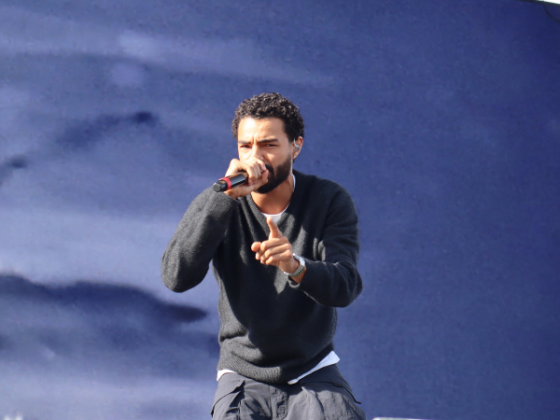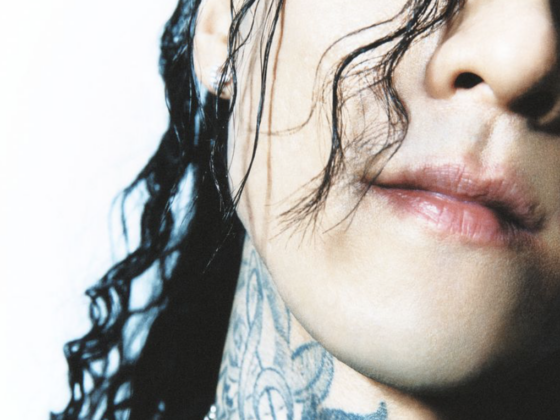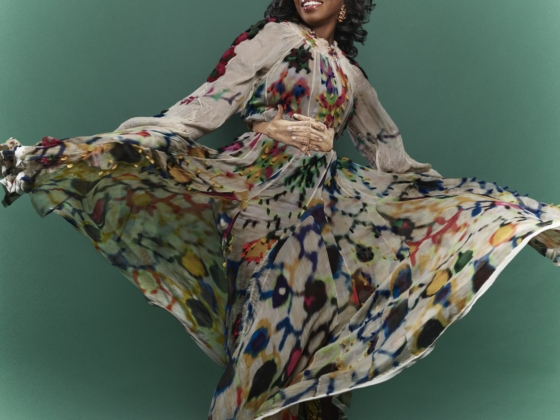In an unexpected shift from their jazz roots, Breathing Ghosts, the collaborative brainchild of Wayne and Ian, have released their latest album Lines, an avant-garde collection fuses ambient, modern jazz, and minimalist influences, creating a soundscape that transcends conventional genres.
Inspired by the ethereal sounds of Icelandic music and a desire to explore uncharted musical territories, the project reflects the duo's commitment to pushing boundaries and embracing the unpredictable nature of creative expression.
In an exclusive chat with EARMILK, the pair delve into the inspirations, creative process, and unique dynamics that shaped this groundbreaking album.
EARMILK: Lines seems to have been a departure from your initial plans for a jazz collaboration. What inspired this shift in musical direction?
Wayne: Listening to a lot of music from Iceland inspired me to do this project. I wanted to do something without drums or less drums.
Ian: Yeah, we’ve both listened to a lot of different music, and although we’ve played together a lot in more of a jazz context, we both knew that each of us had a lot of other musical interests. So, when we started working on this music we decided pretty quickly to embrace whatever direction it went, regardless of genre.
EARMILK:. Could you walk us through the creative process behind Lines? How did the dynamic between you two shape the final product?
Wayne: I came up with the chords. Ian came up with the melody.
Ian: Yeah, for the most part Wayne would send me a pdf with some chord changes, or sometimes melodic fragments too, and I would just start trying things and see where it went.
Wayne: Ian also added an extra part to Mehdoosa and in this Dream.
Ian: On some of the things we worked on, like those two tunes, the first part of the song was based off Wayne’s original framework, and then I’d hear it go somewhere else.
EARMILK: The album encompasses a wide range of styles, from ambient to modern jazz to minimalist influences. How do you navigate these diverse influences while maintaining a cohesive sound?
Ian: That was always something we were conscious of while recording. We created a lot more music than just what’s on this album, but these particular songs just felt right together, even though that are pretty different. We wanted to take listeners on a journey. Sometimes that journey goes into familiar territory, and sometimes it goes to unexpected places.
EARMILK: "I’ll See You Again" and "Mehdoosa" seem to represent opposite ends of the sonic spectrum on "Lines". What was the thought process behind juxtaposing these contrasting tracks?
Wayne: I think the two tracks exhibit our range to take the music different places.
Ian: They’re definitely opposite ends of the spectrum! “I’ll See You Again” kind of sets the mood for the rest of the record, while “Mehdoosa” in a lot of ways is the climax of the album. I almost see each of these pieces as part of one large suite and represent different moods throughout.
EARMILK: "In This Dream" has been likened to the works of minimalist composer Steve Reich. How has his music influenced your approach to composition?
Ian: I’ve always been a fan of minimalist composers like Steve Reich and Phillip Glass, and I often subconsciously use some of the polyrhythmic layering that you hear in their work. There are definitely some of those elements in that piece, although I don’t remember it being intentional at the time. I definitely hear it now though!
EARMILK: Can you share any anecdotes or stories behind the creation of specific tracks on the album?
Wayne: I’ve been to Portland only a few times, but those times have been great. From the people, to the food, and to the coffee. “I’ll See You Again” was written for my pops. He past away dec 2016. I thought about him a lot during the pandemic.
Ian: When we started this project it was actually really meant to be me coming up with guitar interludes for Wayne’s jazz album (Be Still, also available on Blue Collar Records) that had to be put on hold at the time, due to the pandemic. So, the first thing he sent, I recorded a 1-2 minute piece. Then he sent another, and I turned it into a 4-5 minute thing still just using guitars, and assumed I had gone completely off the rails and he’d hate it. Then he sent more ideas. One of them was “Mehdoosa”. I started working on it, and I just decided to do whatever popped into my head, including synths, strings, etc. I figured that would definitely scare him off. I remember seeing the three dots on iMessage, and finally I see something like, “Woah. I’m about to send you more stuff.” That’s pretty much when this project was born.
EARMILK: How do you see "Lines" fitting into the current musical landscape? What unique contribution do you believe Breathing Ghosts brings to the table?
Ian: I think some of the most interesting music has always been the stuff that doesn’t really fit any one genre. I think while creating music we have a tendency to create with a certain audience in mind, but most of the time when you do that you end up with something disingenuous and contrived. The idea here was to allow ourselves to create something that went exactly where we would want it to go, and hopefully if it appeals to us, it will appeal to other listeners. Not fitting neatly into a box can make it a tough sell, but I think anyone who takes the time to listen can find something unique and in it, and something that rewards repeat listens.
EARMILK:. The title "Lines" evokes imagery of connections and boundaries. What significance does this title hold for the album's themes and concept?
Ian: Musically speaking, the lines could refer to the melodic lines, whether angular or smooth, or short and fragmented, or long and serpentine. On the flip side, our next album, which contains more music that was created primarily during the same period, will be titled “Spaces”. A big part of the project from the start was to use space and allow the music to breathe and grow naturally throughout each piece. Just like in visual art, the lines mean nothing without the space in music.
EARMILK: With "Spaces" on the horizon, how do you envision this upcoming release expanding upon the sonic territory established in Lines?
Wayne: I think with spaces, it shows that we can take this music to different directions.
Ian: There’s definitely some different sounds explored on “Spaces”. I think the key is to expect the unexpected from it. One thing I really tried to do was to create as many different sounds just from the guitar on both records that most people would never think came from a guitar, and a lot of the wilder sounds ended up on “Spaces”. In a way I guess it was my attempt to try and pickup where Godley and Creme left off on “Consequences” with their gizmo experiments.
EARMILK: Collaboration seems to be a central theme in Breathing Ghosts' work. What do you find most rewarding about collaborating with each other?
Wayne: What’s rewarding is that one idea complements the other idea.
Ian: It’s great to work with someone who has enough trust to hand you a piece of music with little to no explanation and let you take it wherever you want, and then take that idea and push it even further.
EARMILK: How has the pandemic and subsequent lockdowns influenced your creative process and the themes explored in Lines ?
Ian: It may never have happened if not for lockdown. Beyond just the time that we had on our hands as musicians with no outlet, I think that isolation played a big part in the creation of this music. To make music like this you really need to allow yourself the time to create and explore without distraction, something that has become increasingly difficult once again as things have returned to normal.
Wayne: I listened to old sessions I did with some friends (a previous improvisational group called W.I.T.T.O.K), and thought about the places I traveled to before covid.
EARMILK: The album artwork is quite striking. Could you tell us about the concept behind it and how it relates to the music?
Ian: The album cover uses artwork by a friend of mine, Gabe Fonorow. Much of Gabe’s artwork is constructed using lines, as is the piece we used for the cover. I’ve known Gabe for about 20 years now, since we went to college together. Back then he was a bassist, but always seemed to get into all sorts of different things, so it’s not surprising that over the last few years I had been seeing him post some really interesting artwork. When we started putting this music together I immediately thought of some of the pieces I had seen him post online and felt like it really paired well with this music. Much like the music, at first glance it’s very simple, until you take a closer look. There are so many things going on in these tracks that you would never notice if you don’t take the time to sit, close your eyes, and let yourself hear it all. His works are very much the same to me, and there’s a lot of complexity beneath the surface. Be sure to check out his work online, and keep an eye out for the next album cover!
EARMILK: Breathing Ghosts has been described as a fusion of artistic minds. How do your individual musical backgrounds and experiences shape the collective identity of the project?
Wayne: I started playing drums in church, so I listened to a lot of gospel music at that time. So I think some of the music I write is based off that.
Ian: Personally, I’ve always been into a ton of different kinds of music, and I think all of those influences come through in different ways on these tracks, sometimes subtle, sometimes overt. We’ve both played jazz for years so obviously there’s a common musical vocabulary there, but I’ve also played in rock bands over the years, as well as toured with artists like John Legend, Estelle and Eric Roberson, so there’s little bits and pieces of all of that in there.
EARMILK: What do you hope listeners take away from their experience with this album?
Ian: I hope they find that it transports them someplace else, if they allow it to. It’s hard to find 37 minutes or so to close your eyes and listen to anything uninterrupted, but that’s the best way to hear this music.
EARMILK: Looking ahead, where do you see Breathing Ghosts heading in terms of musical exploration and innovation?
Wayne: I’m not sure.
Ian: Yeah, I think that’s the point of this project. There are no preconceived notions of where the music should go or what it should sound like, so we really have no expectation of where it might end up.
Connect with Breathing Ghosts : Instagram











